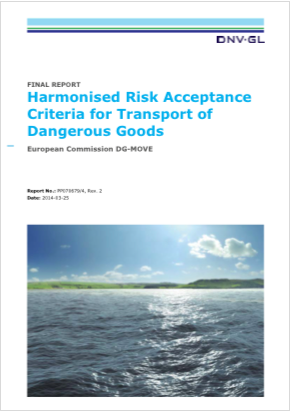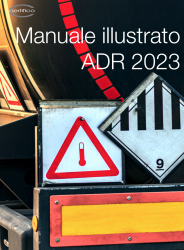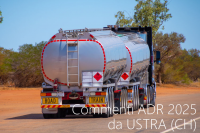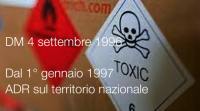Harmonised Risk Criteria Transport Dangerous Goods
| ID 6124 | | Visite: 5368 | Documenti Riservati Trasporto ADR | Permalink: https://www.certifico.com/id/6124 |
Harmonised Risk Acceptance Criteria for Transport of Dangerous Goods
The transport of dangerous goods (TDG) throughout the inland regions of the European Union (EU) is governed by Directive 2008/68/EC and the ADR, RID and ADN regulations for road, rail and inland waterways respectively1. In principle, these uniform regulations should permit free movement of dangerous goods (DG) at an acceptable level of safety.
In practice, because Member States (MS) are also able to apply additional safety requirements where they are considered appropriate, this objective is not completely fulfilled. The additional requirements appear sensible in their intended area of application, but may produce inconsistencies and adverse impacts elsewhere, resulting in increases in cost for industries and unequal protection against risk for the public. One fundamental cause of these inconsistent and sub-optimal impacts may be the lack of explicit harmonised risk acceptance criteria (RAC) for TDG.
The European Commission Directorate-General for Mobility and Transport (DG-MOVE) has therefore commissioned Det Norske Veritas Ltd (DNV) to perform a feasibility study on harmonising RAC for TDG in the EU.
DNV’s proposed harmonised approach to RAC includes seven distinct elements:
-
Threshold criteria, expressed as an expectation value of fatalities per year. Below this, detailed risk assessment and further risk reduction would not be required.
-
Individualrisk(IR)criteria,expressedasmaximumtolerablerisksofdeathperyearfor the most exposed individuals. Above this, the risk would not be acceptable. This aims to protect individual workers or members of the public from unfairly high risks.
-
Societal risk (SR) criteria, expressed as FN curves for the most exposed communities. Above this, measures to reduce catastrophe risk should be investigated.
-
Scrutiny level, expressed as an expectation value of fatalities per tonne of DG transported over a route. Above this, justification of the transport would be needed, and additional restrictions or safety measures should be investigated. The scrutiny level aims to ensure that the risks of TDG are justified by its benefits.
-
ALARP criteria (i.e. defining what is as low as reasonably practicable), consisting of either qualitative or cost-benefit criteria for evaluation of additional restrictions or safety measures. This aims to ensure that safety measures are optimised, taking account of the costs and benefits of risk reduction.
-
Improvement target for TDG, expressed as an expectation value of fatalities per year from all modes of TDG. This would be used to monitor performance and propose additional safety measures.
-
Improvement target for DG, expressed as an expectation value of fatalities per year from all production and transport of DG. This would be a possible way of monitoring and improving consistency with requirements for fixed installations.
Only two of these elements (RAC 2 and 5) would determine the need for additional restrictions or safety measures. The other RAC are aimed at minimising analysis effort (RAC 1) and focussing improvement efforts (RAC 3, 4, 6 and 7). The relationships are summarised in Figure 1.
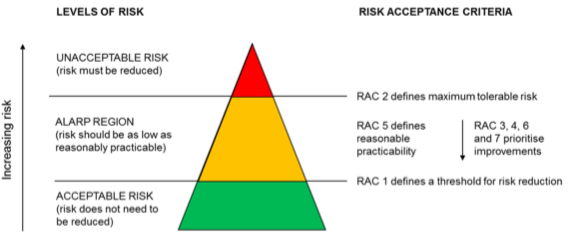
Figure 1 Summary of Harmonised RAC
In most TDG cases the core of the evaluation would be the ALARP criteria (RAC 5). In simple terms, provided risks have been considered on a broad scale, and are not exceptionally high by any of the other RAC, a restriction on TDG can only be justified if it is necessary to make the risks ALARP, i.e. if the costs of the restriction are outweighed by its benefits in terms of risk reduction, or if it is judged to comprise part of good operating practice.
more...
European Commission DG-MOVE 2014
Collegati
| Descrizione | Livello | Dimensione | Downloads | |
|---|---|---|---|---|
| Harmonized risk accentampe criteria trasport dangerous goods.pdf Certifico S.r.l. - Rev. 00 2018 |
5749 kB | 16 |
Tags: Merci Pericolose Safety Dangerous Goods Abbonati Sicurezza





























